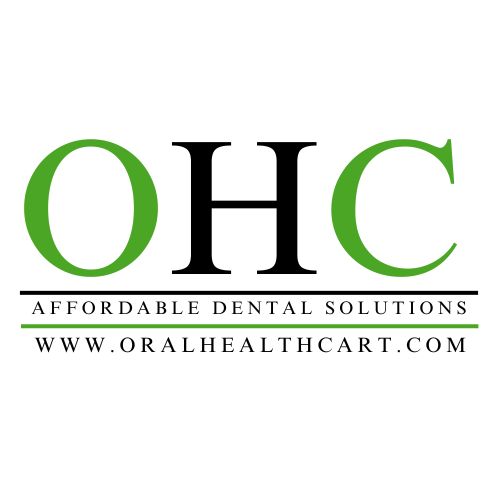How Automation Is Revolutionizing The Modern Dental Chair
The Dental Cart
.jpg)
How Automation Is Revolutionizing The Modern Dental Chair
The dental industry has evolved tremendously over the past few decades, and one of the most remarkable transformations has occurred in the design and functionality of the dental chair. Once a simple mechanical unit, the modern dental chair has now become a technological marvel, driven by automation and intelligent systems. At Oral Health Cart, we believe that understanding these innovations is crucial for every clinic owner who aims to provide comfort, precision, and efficiency in patient care.
In this blog, we’ll explore how automation is revolutionizing the modern dental chair, and why investing in advanced technology can redefine the way dentists work and patients experience treatment.
1. From Manual to Automated: The Evolution of Dental Chairs
Traditional dental chairs were purely mechanical—requiring manual adjustments, lever operations, and limited mobility. These designs often caused operator fatigue and patient discomfort during long procedures. However, the integration of automation and digital control has transformed the dental chair into an intelligent treatment unit.
Modern chairs are now equipped with programmable positioning systems, electronic controls, and sensor-based adjustments, allowing dentists to focus entirely on patient care rather than manual settings. Automation has made dental chairs smarter, faster, and more ergonomic than ever before.
2. Enhanced Patient Comfort Through Precision Adjustments
One of the greatest benefits of automation in dental chairs is the improved patient comfort. Automated chairs allow for smooth, precise adjustments in reclining angles, height, and headrest positioning—all controlled by touchpads or foot switches.
Advanced models even feature memory presets that let dentists save preferred chair positions for different procedures. For example, the optimal position for endodontic treatment can be restored instantly at the press of a button.
This not only saves time but also ensures a consistent, comfortable experience for every patient. Some chairs also include built-in lumbar support, soft cushioning, and synchronized backrest movements—designed to minimize patient anxiety and physical discomfort.
3. Automation Improves Dentist Ergonomics
Dentists often spend long hours in awkward postures, which can lead to chronic back or neck pain. Modern automated chairs are designed with ergonomics in mind, ensuring better posture and less strain for dental professionals.
Features such as auto-adjusting height control, rotating armrests, and smooth 3D movement make it easier to access different areas of the oral cavity without excessive repositioning. Some chairs even integrate voice-activated controls, enabling hands-free adjustments during procedures.
By minimizing physical effort and improving working angles, automation enhances both efficiency and health for practitioners.
4. Integration With Smart Dental Equipment
The modern dental chair is no longer a standalone piece of furniture—it’s the central hub of the operatory. Automated dental chairs now seamlessly integrate with other digital systems, including:
-
Intraoral cameras and X-ray units for quick diagnosis.
-
Scalers and curing lights connected via control panels.
-
Digital patient record systems for data synchronization.
This integration allows dentists to control multiple devices from a single touch interface, improving workflow efficiency and reducing clutter in the operatory.
At Oral Health Cart, we’ve seen how this level of connectivity helps clinics deliver faster, more coordinated care while maintaining a cleaner, technology-driven environment.
5. Safety and Hygiene Automation
Automation has also revolutionized safety and hygiene protocols in dental practices. Many high-end chairs now come with automated disinfection systems, self-cleaning spittoons, and anti-cross-contamination technologies.
Some chairs even feature UV sterilization compartments for dental instruments or built-in waterline disinfection cycles, ensuring a germ-free environment after each patient.
By automating these hygiene tasks, dental professionals can save time, reduce manual labor, and maintain higher standards of patient safety—essential in today’s healthcare environment.
6. Smart Diagnostics and Predictive Maintenance
Automation doesn’t just make dental chairs smarter in function—it also makes them more self-aware. Newer models are equipped with digital monitoring systems that track chair performance, detect malfunctions, and even provide predictive maintenance alerts.
This means dental chairs can now alert users before mechanical issues escalate, minimizing downtime and service interruptions. Such technology ensures that clinics can maintain smooth operations without unexpected equipment failures.
When you buy from Oral Health Cart, you can explore models that offer these intelligent diagnostic features—helping clinics save both time and repair costs in the long run.
7. Eco-Friendly and Energy-Efficient Designs
Automation has also made modern dental chairs more energy-efficient and environmentally friendly. Many models feature auto power-off systems when idle, LED-based lighting, and smart sensors that reduce electricity consumption.
Moreover, automated water usage control prevents wastage during rinsing or suction processes, aligning with sustainability goals while keeping operating costs low.
By investing in an automated, eco-conscious dental chair, clinic owners can contribute to a greener future without compromising performance or patient care.
8. Customization for Modern Practices
Automation allows dentists to personalize their workspace like never before. With programmable presets, digital controls, and modular add-ons, dental chairs can be tailored to the specific needs of each practice—whether it’s orthodontics, surgery, or general dentistry.
From LED-mounted monitor arms for education to foot-controlled operation systems, automation gives clinicians complete control over how their workspace functions—resulting in higher productivity and better patient engagement.
Automation has truly redefined what a dental chair can do. From improving ergonomics and hygiene to enabling smarter workflows and patient comfort, automated dental chairs are the new standard in modern dentistry.
For clinic owners, investing in such innovation isn’t just about staying up-to-date—it’s about enhancing clinical precision, patient satisfaction, and long-term efficiency.
At Oral Health Cart, we’re proud to offer an extensive range of advanced dental chairs and equipment that embody the latest in automation technology. Whether you’re upgrading your clinic or setting up a new one, we help you choose solutions that combine reliability, innovation, and affordability.
5. Signs It’s Time To Replace Your Dental Chair?
A dental chair is more than just a seat—it’s the centerpiece of every dental practice. It directly impacts patient comfort, dentist ergonomics, and the overall efficiency of dental procedures. However, like all equipment, even the most durable dental chairs eventually show signs of wear and tear. Recognizing when it’s time to replace your dental chair can save you from costly breakdowns, dissatisfied patients, and potential safety risks. At Oral Health Cart, we understand how crucial it is to maintain high-performance dental equipment, and in this guide, we’ll help you identify the key signs that indicate it’s time for an upgrade.
1. Frequent Breakdowns and Repairs
If your dental chair has become a frequent visitor to the repair shop, it’s a clear indication that it’s nearing the end of its lifecycle. Frequent issues such as malfunctioning hydraulics, electrical problems, or failing upholstery can interrupt your daily workflow and lead to unnecessary downtime.
While minor repairs are manageable, constant breakdowns not only cost money but also reduce productivity. Investing in a new, reliable model will save you repair expenses in the long run and ensure smooth operation for years to come.
2. Uncomfortable for Patients
Patient comfort is the foundation of a successful dental practice. If patients often shift uncomfortably, complain about the chair’s hardness, or mention back discomfort after procedures, your chair may no longer be providing the ergonomic support it once did.
Modern dental chairs are designed with memory foam, contoured padding, and smooth adjustment features that enhance patient comfort—even during lengthy procedures. Upgrading ensures that your patients have a positive experience, increasing satisfaction and the likelihood of return visits.
3. Outdated Technology and Limited Functionality
Dental technology has advanced rapidly in recent years. Today’s modern dental chairs are equipped with features like touch-screen controls, programmable positions, built-in LED lights, and seamless integration with dental delivery systems.
If your current chair lacks these functionalities or cannot connect with digital systems and handpieces efficiently, it may be time to modernize. By choosing an updated chair through Oral Health Cart, you can streamline operations, reduce manual effort, and create a more tech-forward environment for both staff and patients.
4. Visible Wear and Tear
A dental chair is a visual representation of your clinic’s professionalism. Cracked upholstery, faded leather, squeaky joints, or rusted components not only look unappealing but also raise hygiene and safety concerns.
Visible damage may give patients the wrong impression about your clinic’s quality standards. Since aesthetics play a huge role in patient perception, investing in a sleek, modern replacement can enhance your clinic’s image and demonstrate your commitment to top-quality care.
5. Poor Ergonomics for the Dentist and Team
A worn-out or poorly designed chair doesn’t just affect patients—it can also cause fatigue, discomfort, and even musculoskeletal issues for dental professionals. If you find yourself constantly adjusting your posture, struggling with chair height, or feeling back or neck pain after procedures, your chair’s ergonomics might be failing you.
Modern dental chairs are built with operator comfort in mind, featuring smooth mobility, adjustable headrests, and better access angles. Upgrading to an ergonomic design improves your working posture and helps prevent long-term strain.
6. Difficulty in Cleaning and Maintenance
Dental chairs must meet the highest standards of hygiene and sterilization. If your current chair has cracks, exposed seams, or deteriorating materials that trap debris and fluids, maintaining proper cleanliness can become difficult.
Modern designs focus on easy-to-clean surfaces, antimicrobial upholstery, and seamless construction to minimize contamination risks. Replacing your old chair helps ensure compliance with strict infection control protocols and creates a safer environment for both patients and staff.
7. Noisy Operations or Slow Movements
If your dental chair squeaks, jerks, or moves sluggishly during adjustments, it’s a sign that the internal mechanisms are wearing out. Not only can this disrupt procedures, but it can also create anxiety among patients who associate the noise with malfunction.
Newer models feature quiet motors and smooth hydraulic systems that enhance both functionality and the overall experience for patients. Smooth, silent operation is a mark of quality that today’s dental patients expect.
8. Outgrown Capacity or Clinic Expansion
As your practice grows, your equipment should grow with it. If you’re adding new treatment areas, expanding services, or upgrading your clinic’s technology, your existing chair might not meet the new operational requirements.
Investing in modern dental chairs with flexible configurations ensures your practice is equipped for future growth. Whether you’re integrating digital imaging, advanced endodontic tools, or surgical attachments, a new chair can better accommodate your evolving needs.
9. Declining Resale or Trade-In Value
When your dental chair’s performance declines, so does its value. If you’re considering trading it in for a new model, it’s better to do so before it loses all resale potential. Many suppliers, including Oral Health Cart, offer competitive exchange programs that can make upgrading more affordable. Acting early allows you to maximize the return on your old equipment while upgrading to a high-performance replacement.
10. Changing Patient Expectations
Today’s patients expect a modern, relaxing, and tech-savvy dental environment. A dated or worn chair can make your clinic appear behind the times, even if your clinical skills are exceptional. Upgrading to a contemporary dental chair not only boosts comfort but also reinforces patient trust and loyalty.
Your dental chair is the heart of your practice—impacting patient comfort, clinical efficiency, and your professional image. When it starts showing signs of wear, inefficiency, or outdated features, it’s time to consider an upgrade.
At Oral Health Cart, we help dental professionals find high-quality, ergonomic, and technology-driven dental chairs that align with modern practice needs. Whether you’re replacing an old model or setting up a new clinic, our curated range ensures lasting performance and patient satisfaction.
Categories: Prostho Instruments


 Oralhealthcart Products
Oralhealthcart Products

